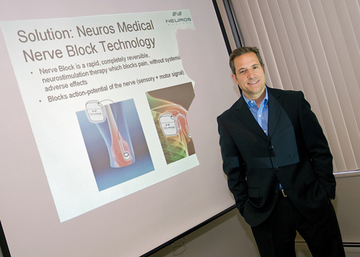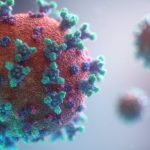Healthcare is massive economic burden in this country.
How massive? According to the National Health Expenditure Accounts, the federal agency that has tracked healthcare spending in the U.S. since the 1960s, it now totals roughly $3.5 trillion per year, or more than $10,000 per person. As a percentage of GDP, health spending accounts for nearly 18%.
That’s more than any other country in the world, despite the fact that U.S. life expectancy continues to fall below the average of other high-income countries.
Something has to change. We have to simultaneously improve quality and reduce cost. Fortunately, a number of innovative entrepreneurs are working on these problems right now, developing new treatments, perfecting groundbreaking science and creating the next generation of breakthrough healthcare products. Here are some of the big trends we’re watching this year.
Addressing chronic disease through nutrition.
The U.S. is a country of chronic conditions. In fact, among the most prevalent diseases here are heart disease and stroke, cancer, diabetes, and arthritis, and 90% of the nation’s annual healthcare expenditures are for people with chronic and mental illness, according to the National Center for Chronic Disease Prevention and Health Promotion.
Why are we so sick? There is growing evidence that our diet is killing us. Sugar and processed foods are being more directly linked to diabetes, cancer, and even Alzheimer’s disease. Even without those more direct links, obesity is by far the greatest risk factor for chronic diseases in the U.S. What if, instead of paying to treat these illnesses, we redirected these massive funds to ensuring that our population has universal access to healthy foods that keep them healthy in the first place?
Early cancer diagnostics.
According to the National Cancer Institute, roughly 1,735,350 new cases of cancer are diagnosed in the U.S. every year, with more than 609,000 people dying from the disease. Those statistics are grim, but the fact remains that, even with today’s advanced treatments like targeted drugs, catching cancer early saves lives.
That’s why new and more accurate cancer diagnostic tools are being developed. The intent is twofold: catch it early before while it can still be treated cost effectively, and eliminate the unnecessary monetary and emotional costs associated with a misdiagnosis.
Diagnosing Alzheimer’s disease early.
Like cancer, Alzheimer’s is a scourge, the sixth leading cause of death in the U.S. and something that afflicts more than 44 million worldwide. It cannot be cured yet, but diagnosing the disease in patients before they start showing symptoms, before irreversible brain damage occurs, could prove invaluable in the development of new treatments.
We’re seeing a lot of work focused on this area right now, given the 89% increase in Alzheimer’s deaths since 2000. This includes a range of studies into sleep patterns, voice analysis, blood tests, eye scans and more.
Using Big Data and Collaboration to improve the development process.
Collaboration is key in medical research, allowing specialists to build upon the earlier successes of their colleagues, but for too long research has been siloed in institutions and individual labs.
The internet is finally changing that, allowing researchers on opposite sides of the globe (or even across the same campus) to collaborate on projects in real-time, potentially uncovering breakthroughs faster and leveraging the analytical power of Big Data.
These are just a few examples of the groundbreaking work that’s happening right now in medicine and healthcare. It remains to be seen what’s coming next, but we’re confident that innovation is the solution to the problems we’re facing today.






